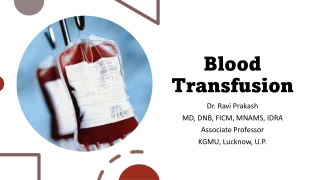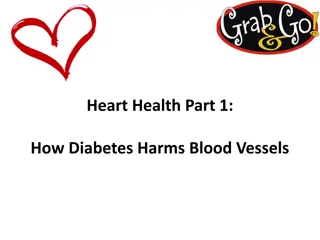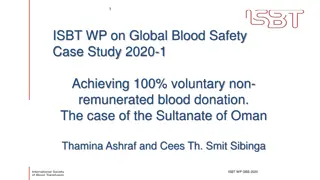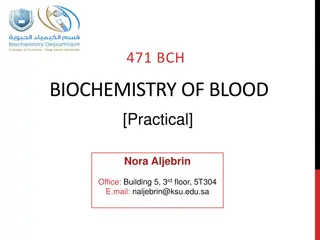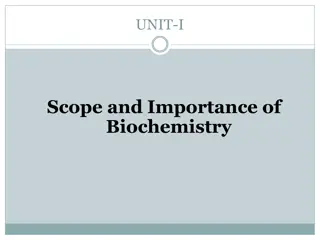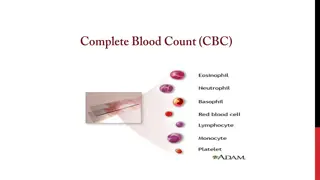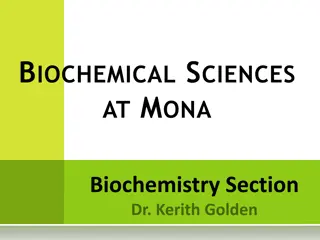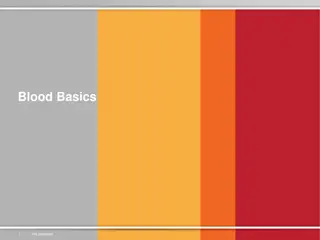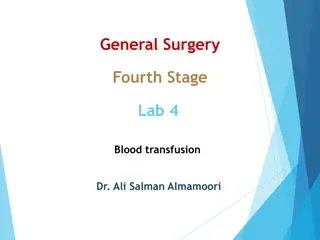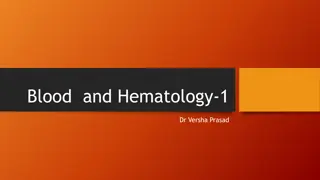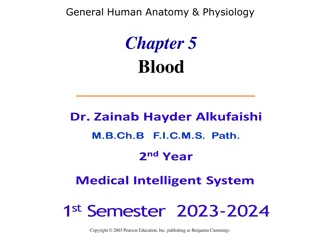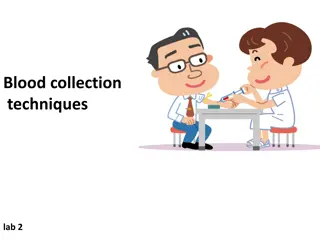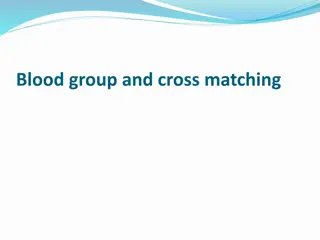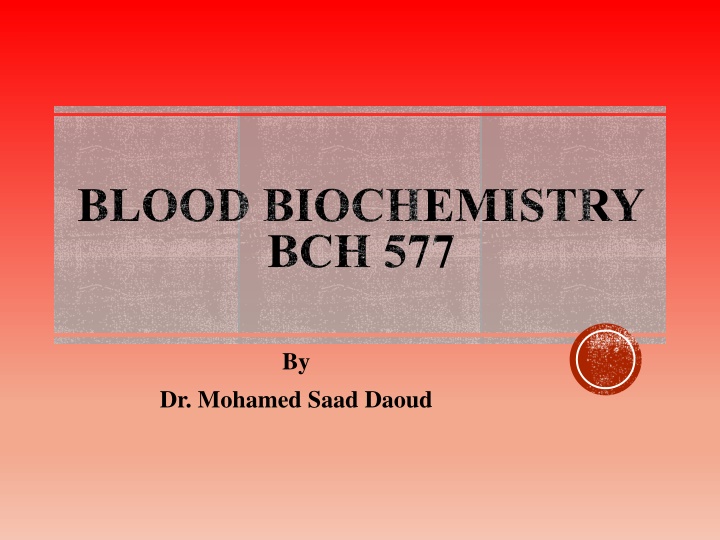
Preventing Blood Clotting in the Vascular System
Learn about the key factors that prevent blood clotting in the normal vascular system, such as the role of endothelial surface factors, glycocalyx, thrombomodulin, fibrin, and antithrombin. Discover how these mechanisms help maintain vascular health and prevent excessive clot formation.
Download Presentation

Please find below an Image/Link to download the presentation.
The content on the website is provided AS IS for your information and personal use only. It may not be sold, licensed, or shared on other websites without obtaining consent from the author. If you encounter any issues during the download, it is possible that the publisher has removed the file from their server.
You are allowed to download the files provided on this website for personal or commercial use, subject to the condition that they are used lawfully. All files are the property of their respective owners.
The content on the website is provided AS IS for your information and personal use only. It may not be sold, licensed, or shared on other websites without obtaining consent from the author.
E N D
Presentation Transcript
BLOOD BIOCHEMISTRY BCH 577 By Dr. Mohamed Saad Daoud
Prevention of Blood Clotting in the Normal Vascular System IntravascularAnticoagulants Endothelial Surface Factors Probably the most important factors for preventing clotting in the normal vascular system are: (1) The smoothness of the endothelial cell surface, which prevents contact activation of the intrinsic clotting system (2) Layer of glycocalyx on the endothelium (glycocalyx is a mucopolysaccharide adsorbed to the surfaces of the endothelial cells), which repels clotting factors and platelets, thereby preventing activation of clotting 2 Dr. Mohamed Saad Daoud
(3) Protein bound with the endothelial membrane, thrombomodulin, which binds thrombin. Not only does the binding of thrombin with thrombomodulin slow the clotting process by removing thrombin, but the thrombomodulin- thrombin complex also activates a plasma protein, protein C, that acts as an anticoagulant by inactivating activated Factors V and VIII. When the endothelial wall is damaged, its smoothness and its glycocalyx-thrombomodulin layer are lost, which activates both Factor XII and the platelets, thus setting off the intrinsic pathway of clotting. If Factor XII and platelets come in contact with the subendothelial collagen, the activation is even more powerful. 3 Dr. Mohamed Saad Daoud
Antithrombin Action of Fibrin and Antithrombin III. Among the most important anticoagulants in the blood itself are those that remove thrombin from the blood. The most powerful of these are (1) The fibrin fibers that themselves are formed during the process of clotting (2) An alpha-globulin called antithrombin III or antithrombin-heparin cofactor. While a clot is forming, about 85 to 90 per cent of the thrombin formed from the prothrombin becomes adsorbed to the fibrin fibers as they develop. This helps prevent the spread of thrombin into the remaining blood and, therefore, prevents excessive spread of the clot. 4 Dr. Mohamed Saad Daoud
The thrombin that does not adsorb to the fibrin fibers soon combines with antithrombin III, which further blocks the effect of the thrombin on the fibrinogen and then also inactivates the thrombin itself during the next 12 to 20 minutes. 5 Dr. Mohamed Saad Daoud
Heparin Heparin is a powerful anticoagulant, but its concentration in the blood is normally low. Heparin is used widely as a pharmacological agent in medical practice in much higher concentrations to prevent intravascular clotting. The heparin molecule is a highly negatively charged conjugated polysaccharide. Heparin has little anticoagulant properties, but when it combines with antithrombin III, the effectiveness of antithrombin III for removing thrombin increases by 100 to 1000 fold, and thus it acts as an anticoagulant. 6 Dr. Mohamed Saad Daoud
The complex of heparin and antithrombin III removes several other activated coagulation factors (activated Factors XII, XI, X, and IX) in addition to thrombin, further enhancing the effectiveness of anticoagulation. Heparin is produced by many different cells of the body, but especially large quantities are formed by the basophilic mast cells located in the pericapillary connective tissue throughout the body. The basophil cells of the blood, which are functionally almost identical to the mast cells, release small quantities of heparin into the plasma. 7 Dr. Mohamed Saad Daoud
Mast cells are abundant in tissue surrounding the capillaries of the lungs and to a lesser extent capillaries of the liver. It is easy to understand why large quantities of heparin might be needed in these areas because the capillaries of the lungs and liver receive many embolic clots formed in slowly flowing venous blood; sufficient formation of heparin prevents further growth of the clots. 8 Dr. Mohamed Saad Daoud
Lysis of Blood Clots (Plasmin) The plasma proteins contain a euglobulin called plasminogen (or profibrinolysin) that, when activated, becomes a substance called plasmin (or fibrinolysin). Plasmin is a proteolytic enzyme digests fibrin fibers and some other protein coagulants such as fibrinogen, Factor V, Factor VIII, prothrombin, and Factor XII. Therefore, whenever plasmin is formed, it can cause lysis of a clot by destroying many of the clotting factors, thereby sometimes even causing hypocoagulability of the blood. 9 Dr. Mohamed Saad Daoud
Activation of Plasminogen to Form Plasmin-Then Lysis of Clots. When a clot is formed, a large amount of plasminogen is trapped in the clot along with other plasma proteins. This will not become plasmin or cause lysis of the clot until it is activated. The injured tissues and vascular endothelium very slowly release a powerful activator called tissue plasminogen activator (t-PA) that a few days later, after the clot has stopped the bleeding, eventually converts plasminogen to plasmin, which in turn removes the remaining unnecessary blood clot. 10 Dr. Mohamed Saad Daoud
In fact, many small blood vessels in which blood flow has been blocked by clots are reopened by this mechanism. Thus, an especially important function of the plasmin system is to remove minute clots from millions of tiny peripheral vessels. 11 Dr. Mohamed Saad Daoud
Conditions That Cause Excessive Bleeding in Human Beings Excessive bleeding can result from deficiency of any one of the many blood-clotting factors. Three particular types of bleeding tendencies that have been studied to the greatest extent, bleeding caused by (1) vitamin K deficiency (2) hemophilia (3) thrombocytopenia (platelet deficiency). 12 Dr. Mohamed Saad Daoud
Decreased Prothrombin, Factor VII, Factor IX, and Factor X Caused by Vitamin K Deficiency With few exceptions, almost all the blood-clotting factors are formed by the liver. Therefore, diseases of the liver such as hepatitis, cirrhosis, and acute yellow atrophy can sometimes depress the clotting system so greatly that the patient develops a severe tendency to bleed. Another cause of depressed formation of clotting factors by the liver is vitamin K deficiency. Vitamin K is necessary for liver formation of five of the important clotting factors: prothrombin, Factor VII, Factor IX, Factor X, and protein C. In the absence of vitamin K, subsequent insufficiency of these coagulation factors in the blood can lead to serious bleeding tendencies. 13 Dr. Mohamed Saad Daoud
Vitamin K is synthesized in the intestinal tract by bacteria, so that vitamin K deficiency seldom occurs in the normal person as a result of vitamin K absence from the diet (except in neonates before they establish their intestinal bacterial flora). However, in gastrointestinal disease, vitamin K deficiency often occurs as a result of poor absorption of fats from the gastrointestinal tract. The reason is that vitamin K is fat-soluble and ordinarily is absorbed into the blood along with the fats. One of the most prevalent causes of vitamin K deficiency is failure of the liver to secrete bile into the gastrointestinal tract (which occurs either as a result of obstruction of the bile ducts or as a result of liver disease). 14 Dr. Mohamed Saad Daoud
Lack of bile prevents adequate fat digestion and absorption and, therefore, depresses vitamin K absorption as well. Thus, liver disease often causes decreased production of prothrombin and some other clotting factors both because of poor vitamin K absorption and because of the diseased liver cells. Because of this, vitamin K is injected into all surgical patients with liver disease or with obstructed bile ducts before performing the surgical procedure. Ordinarily, if vitamin K is given to a deficient patient 4 to 8 hours before the operation and the liver parenchymal cells are at least one-half normal in function, sufficient clotting factors will be produced to prevent excessive bleeding during the operation. 15 Dr. Mohamed Saad Daoud
Hemophilia Hemophilia is a bleeding disease that occurs almost exclusively in males. In 85 per cent of cases, it is caused by an abnormality or deficiency of Factor VIII; this type of hemophilia is called hemophilia A or classic hemophilia. In the other 15 per cent of hemophilia patients, the bleeding tendency is caused by deficiency of Factor IX. Both of these factors are transmitted genetically by way of the female chromosome. Therefore, almost never will a woman have hemophilia because at least one of her two X chromosomes will have the appropriate genes. 16 Dr. Mohamed Saad Daoud
If one of her X chromosomes is deficient, she will be a hemophilia carrier, transmitting the disease to half of her male offspring and transmitting the carrier state to half of her female offspring. The bleeding trait in hemophilia can have various degrees of severity, depending on the character of the genetic deficiency. Bleeding usually does not occur except after trauma, but in some patients, the degree of trauma required to cause severe and prolonged bleeding may be so mild that it is hardly noticeable. For instance, bleeding can often last for days after extraction of a tooth. 17 Dr. Mohamed Saad Daoud
Factor VIII has two active components, a large component with a molecular weight in the millions and a smaller component with a molecular weight of about 230,000. The smaller component is most important in the intrinsic pathway for clotting, and it is deficiency of this part of Factor VIII that causes classic hemophilia. Another bleeding disease with somewhat different characteristics, called von Willebrand s disease, results from loss of the large component. 18 Dr. Mohamed Saad Daoud
When a person with classic hemophilia experiences severe prolonged bleeding, almost the only therapy that is truly effective is injection of purified Factor VIII. The cost of Factor VIII is high, and its availability is limited because it can be gathered only from human blood and only in extremely small quantities. 19 Dr. Mohamed Saad Daoud
Thrombocytopenia Thrombocytopenia means the presence of very low numbers of platelets in the circulating blood. People with thrombocytopenia have a tendency to bleed, as do hemophiliacs, except that the bleeding is usually from many small venules or capillaries, rather than from larger vessels as in hemophilia. As a result, small punctate hemorrhages occur throughout all the body tissues. The skin of such a person displays many small, purplish blotches, giving the disease the name thrombocytopenic purpura. As stated earlier, platelets are especially important for repair of minute breaks in capillaries and other small vessels. 20 Dr. Mohamed Saad Daoud
Ordinarily, bleeding will not occur until the number of platelets in the blood falls below 50,000/ml, rather than the normal 150,000 to 300,000. Levels as low as 10,000/ml are frequently lethal. Even without making specific platelet counts in the blood, sometimes one can suspect the existence of thrombocytopenia if the person s blood fails to retract, because, the clot retraction is normally dependent on the release of multiple coagulation factors from the large numbers of platelets entrapped in the fibrin mesh of the clot. 21 Dr. Mohamed Saad Daoud
Most people with thrombocytopenia have the disease known as idiopathic thrombocytopenia, which means thrombocytopenia of unknown cause. In most of these people, it has been discovered that for unknown reasons, specific antibodies have formed and react against the platelets themselves to destroy them. Relief from bleeding for 1 to 4 days can often be effected in a patient with thrombocytopenia by giving fresh whole blood transfusions that contain large numbers of platelets. Also, splenectomy is often helpful, sometimes effecting almost complete cure because the spleen normally removes large numbers of platelets from the blood. 22 Dr. Mohamed Saad Daoud
Thromboembolic Conditions in the Human Being Thrombi and Emboli. An abnormal clot that develops in a blood vessel is called a thrombus. Once a clot has developed, continued flow of blood past the clot is likely to break it away from its attachment and cause the clot to flow with the blood; such freely flowing clots are known as emboli. Also, emboli that originate in large arteries or in the left side of the heart can flow peripherally and plug arteries or arterioles in the brain, kidneys, or elsewhere. Emboli that originate in the venous system or in the right side of the heart generally flow into the lungs to cause pulmonary arterial embolism. 23 Dr. Mohamed Saad Daoud
Cause of Thromboembolic Conditions. The causes of thromboembolic conditions in the human being are usually twofold: (1) Any roughened endothelial surface of a vessel as may be caused by arteriosclerosis, infection, or trauma is likely to initiate the clotting process. (2) Blood often clots when it flows very slowly through blood vessels, where small quantities of thrombin and other procoagulants are always being formed. 24 Dr. Mohamed Saad Daoud
Use of t-PA in Treating Intravascular Clots. Genetically engineered t-PA (tissue plasminogen activator) is available. When delivered directly to a thrombosed area through a catheter, it is effective in activating plasminogen to plasmin, which in turn can dissolve some intravascular clots. For instance, if used within the first hour or so after thrombotic occlusion of a coronary artery, the heart is often spared serious damage. 25 Dr. Mohamed Saad Daoud
Femoral Venous Thrombosis and Massive Pulmonary Embolism Because clotting almost always occurs when blood flow is blocked for many hours in any vessel of the body, the immobility of patients confined to bed plus the practice of propping the knees with pillows often causes intravascular clotting because of blood stasis in one or more of the leg veins for hours at a time. Then the clot grows, mainly in the direction of the slowly moving venous blood, sometimes growing the entire length of the leg veins and occasionally even up into the common iliac vein and inferior vena cava. 26 Dr. Mohamed Saad Daoud
Then, about 1 time out of every 10, a large part of the clot disengages from its attachments to the vessel wall and flows freely with the venous blood through the right side of the heart and into the pulmonary arteries to cause massive blockage of the pulmonary arteries, called massive pulmonary embolism. If the clot is large enough to occlude both of the pulmonary arteries at the same time, immediate death ensues. If only one pulmonary artery is blocked, death may not occur, or the embolism may lead to death a few hours to several days later because of further growth of the clot within the pulmonary vessels. But, again, t-PA therapy can be a lifesaver. 27 Dr. Mohamed Saad Daoud
Disseminated Intravascular Coagulation Occasionally the clotting mechanism becomes activated in widespread areas of the circulation, giving rise to the condition called disseminated intravascular coagulation. This often results from the presence of large amounts of traumatized or dying tissue in the body that releases great quantities of tissue factor into the blood. Frequently, the clots are small but numerous, and they plug a large share of the small peripheral blood vessels. This occurs especially in patients with widespread septicemia, in which either circulating bacteria or bacterial toxins especially endotoxins activate the clotting mechanisms. 28 Dr. Mohamed Saad Daoud
Plugging of small peripheral vessels greatly diminishes delivery of oxygen and other nutrients to the tissues a situation that leads to or exacerbates circulatory shock. It is partly for this reason that septicemic shock is lethal in 85 percent or more of patients. A peculiar effect of disseminated intravascular coagulation is that the patient on occasion begins to bleed. The reason for this is that so many of the clotting factors are removed by the widespread clotting that too few procoagulants remain to allow normal hemostasis of the remaining blood. 29 Dr. Mohamed Saad Daoud
Anticoagulants for Clinical Use In some thromboembolic conditions, it is desirable to delay the coagulation process. Various anticoagulants have been developed for this purpose. The ones most useful clinically are heparin and the coumarins. Heparin as an Intravenous Anticoagulant Commercial heparin is extracted from several different animal tissues and prepared in almost pure form. Injection of relatively small quantities, about 0.5 to 1 mg/kg of body weight, causes the blood-clotting time increasing. --------------- 30 Dr. Mohamed Saad Daoud
To increase from a normal of about 6 minutes to 30 or more minutes. Furthermore, this change in clotting time occurs instantaneously, thereby immediately preventing or slowing further development of a thromboembolic condition. The action of heparin lasts about 1.5 to 4 hours. The injected heparin is destroyed by an enzyme in the blood known as heparinase. 31 Dr. Mohamed Saad Daoud
Coumarins as Anticoagulants When a coumarin, such as warfarin, is given to a patient, the plasma levels of prothrombin and Factors VII, IX, and X, all formed by the liver, begin to fall, indicating that warfarin has a potent depressant effect on liver formation of these compounds. Warfarin causes this effect by competing with vitamin K for reactive sites in the enzymatic processes for formation of prothrombin and the other three clotting factors, thereby blocking the action of vitamin K. 32 Dr. Mohamed Saad Daoud
After administration of an effective dose of warfarin, the coagulant activity of the blood decreases to about 50 per cent of normal by the end of 12 hours and to about 20 percent of normal by the end of 24 hours. In other words, the coagulation process is not blocked immediately but must await the natural consumption of the prothrombin and the other affected coagulation factors already present in the plasma. Normal coagulation usually returns 1 to 3 days after discontinuing coumarin therapy. 33 Dr. Mohamed Saad Daoud
Prevention of Blood Coagulation Outside the Body Although blood removed from the body and held in a glass test tube normally clots in about 6 minutes, blood collected in siliconized containers often does not clot for 1 hour or more. The reason for this delay is that preparing the surfaces of the containers with silicone prevents contact activation of platelets and Factor XII, the two principal factors that initiate the intrinsic clotting mechanism. Conversely, untreated glass containers allow contact activation of the platelets and Factor XII, with rapid development of clots. 34 Dr. Mohamed Saad Daoud
Heparin can be used for preventing coagulation of blood outside the body as well as in the body. Heparin is especially used in surgical procedures in which the blood must be passed through a heart-lung machine or artificial kidney machine and then back into the person. Various substances that decrease the concentration of calcium ions in the blood can also be used for preventing blood coagulation outside the body. For instance, a soluble oxalate compound mixed in a very small quantity with a sample of blood causes precipitation of calcium oxalate from the plasma and thereby decreases the ionic calcium level so much that blood coagulation is blocked. 35 Dr.Mohamed Saad Daoud
Any substance that deionizes the blood calcium will prevent coagulation. The negatively charged citrate ion is especially valuable for this purpose, mixed with blood usually in the form of sodium, ammonium, or potassium citrate. The citrate ion combines with calcium in the blood to cause an un- ionized calcium compound, and the lack of ionic calcium prevents coagulation. Citrate anticoagulants have an important advantage over the oxalate anticoagulants because oxalate is toxic to the body, whereas moderate quantities of citrate can be injected intravenously. After injection, the citrate ion is removed from the blood within a few minutes by the liver and is polymerized into glucose or metabolized directly for energy. 36 Dr. Mohamed Saad Daoud
Consequently, 500 milliliters of blood that has been rendered incoagulable by citrate can ordinarily be transfused into a recipient within a few minutes without dire consequences. But if the liver is damaged or if large quantities of citrated blood or plasma are given too rapidly (within fractions of a minute), the citrate ion may not be removed quickly enough, and the citrate can, under these conditions, greatly depress the level of calcium ion in the blood, which can result in tetany and convulsive death. 37 Dr. Mohamed Saad Daoud
Blood Coagulation Tests Bleeding Time When a sharp-pointed knife is used to pierce the tip of the finger or lobe of the ear, bleeding ordinarily lasts for 1 to 6 minutes. The time depends largely on the depth of the wound and the degree of hyperemia in the finger or ear lobe at the time of the test. Lack of any one of several of the clotting factors can prolong the bleeding time, but it is especially prolonged by lack of platelets. 38 Dr. Mohamed Saad Daoud
Clotting Time Many methods have been devised for determining blood clotting times. The one most widely used is to collect blood in a chemically clean glass test tube and then to tip the tube back and forth about every 30 seconds until the blood has clotted. By this method, the normal clotting time is 6 to 10 minutes. Procedures using multiple test tubes have also been devised for determining clotting time more accurately. Unfortunately, the clotting time varies widely, depending on the method used for measuring it, so it is no longer used in many clinics. Instead, measurements of the clotting factors themselves are made, using sophisticated chemical procedures. 39 Dr. Mohamed Saad Daoud
Prothrombin Time Prothrombin time gives an indication of the concentration of prothrombin in the blood. The following figure shows the relation of prothrombin concentration to prothrombin time. The method for determining prothrombin time is the following. Blood removed from the patient is immediately oxalated so that none of the prothrombin can change into thrombin. Then, a large excess of calcium ion and tissue factor is quickly mixed with the oxalated blood. The excess calcium cancel the effect of the oxalate, and the tissue factor activates the prothrombin-to thrombin reaction by means of the extrinsic clotting pathway. 40 Dr. Mohamed Saad Daoud
The time required for coagulation to take place is known as the prothrombin time. The shortness of the time is determined mainly by prothrombin concentration. The normal prothrombin time is about 12 seconds. In each laboratory, a curve relating prothrombin concentration to prothrombin time, such as The shortness of the time is determined mainly by prothrombin concentration. 41 Dr. Mohamed Saad Daoud
Relation of prothrombin concentration in the blood to prothrombin time. 42 Dr. Mohamed Saad Daoud
Tests similar to that for prothrombin time have been devised to determine the quantities of other blood clotting factors. In each of these tests, excesses of calcium ions and all the other factors besides the one being tested are added to oxalated blood all at once. Then the time required for coagulation is determined in the same manner as for prothrombin time. If the factor being tested is deficient, the coagulation time is prolonged. The time itself can then be used to quantitate the concentration of the factor. 43 Dr. Mohamed Saad Daoud

